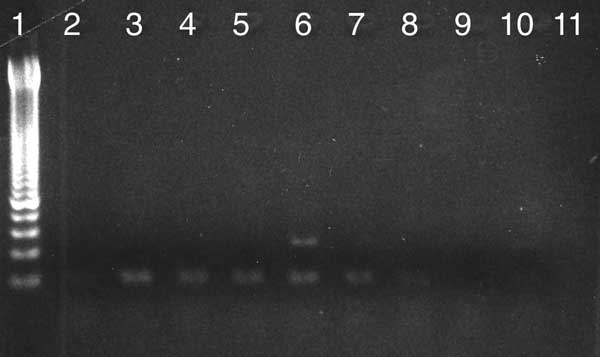Volume 12, Number 10—October 2006
Letter
Leishmaniasis in Ancient Egypt and Upper Nubia
Figure

Figure. PCR amplification of a 120-bp fragment of kinetoplastid mitochondrial DNA of Leishmania spp. in Egyptian and Nubian mummies. Lane 1, 50-bp ladder lanes 2–8, mummy samples; lanes 9,10, extraction controls; lane 11, PCR controls. Lane 6 provides a positive amplification product of the expected size.
Page created: November 10, 2011
Page updated: November 10, 2011
Page reviewed: November 10, 2011
The conclusions, findings, and opinions expressed by authors contributing to this journal do not necessarily reflect the official position of the U.S. Department of Health and Human Services, the Public Health Service, the Centers for Disease Control and Prevention, or the authors' affiliated institutions. Use of trade names is for identification only and does not imply endorsement by any of the groups named above.